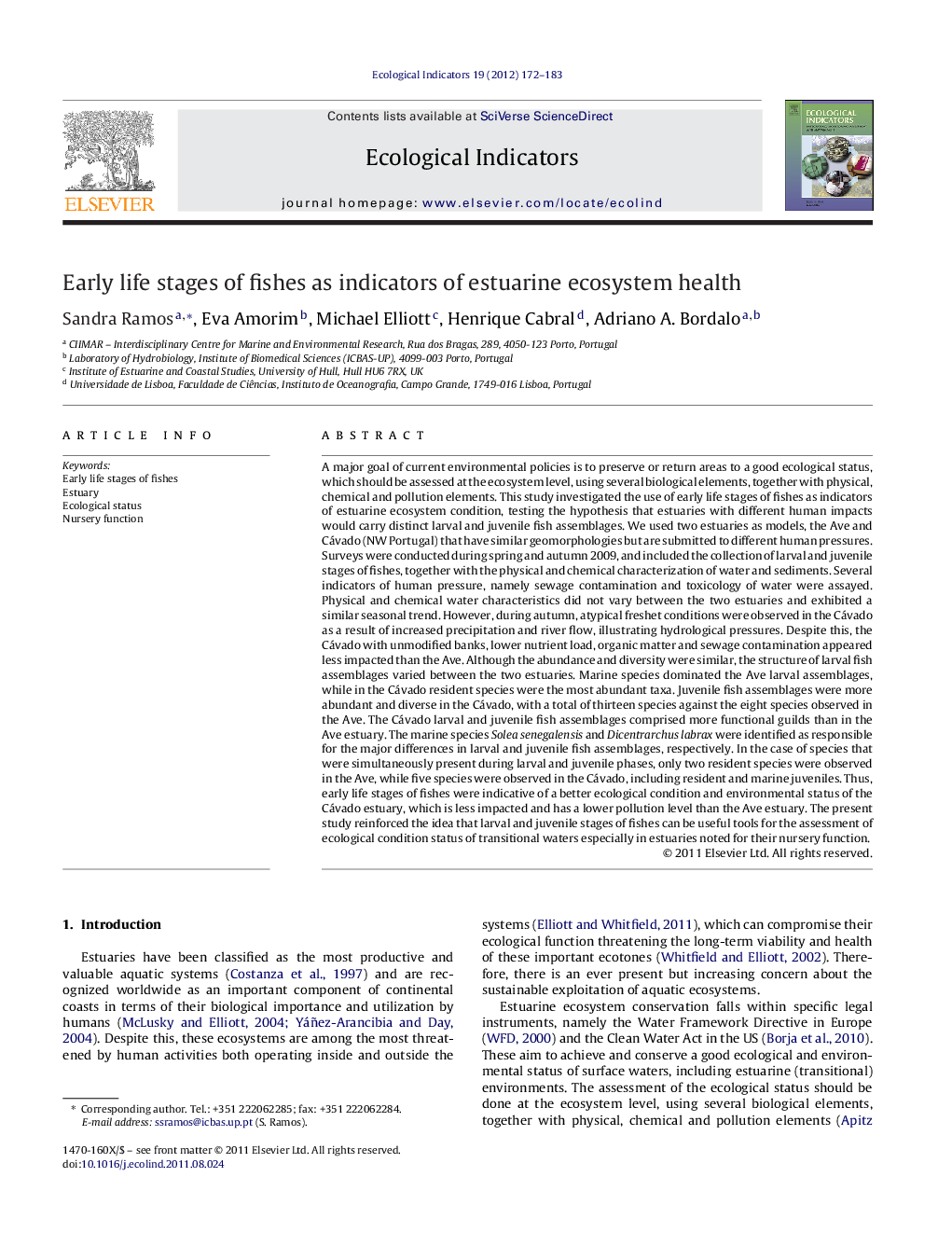| کد مقاله | کد نشریه | سال انتشار | مقاله انگلیسی | نسخه تمام متن |
|---|---|---|---|---|
| 4373723 | 1617181 | 2012 | 12 صفحه PDF | دانلود رایگان |

A major goal of current environmental policies is to preserve or return areas to a good ecological status, which should be assessed at the ecosystem level, using several biological elements, together with physical, chemical and pollution elements. This study investigated the use of early life stages of fishes as indicators of estuarine ecosystem condition, testing the hypothesis that estuaries with different human impacts would carry distinct larval and juvenile fish assemblages. We used two estuaries as models, the Ave and Cávado (NW Portugal) that have similar geomorphologies but are submitted to different human pressures. Surveys were conducted during spring and autumn 2009, and included the collection of larval and juvenile stages of fishes, together with the physical and chemical characterization of water and sediments. Several indicators of human pressure, namely sewage contamination and toxicology of water were assayed. Physical and chemical water characteristics did not vary between the two estuaries and exhibited a similar seasonal trend. However, during autumn, atypical freshet conditions were observed in the Cávado as a result of increased precipitation and river flow, illustrating hydrological pressures. Despite this, the Cávado with unmodified banks, lower nutrient load, organic matter and sewage contamination appeared less impacted than the Ave. Although the abundance and diversity were similar, the structure of larval fish assemblages varied between the two estuaries. Marine species dominated the Ave larval assemblages, while in the Cávado resident species were the most abundant taxa. Juvenile fish assemblages were more abundant and diverse in the Cávado, with a total of thirteen species against the eight species observed in the Ave. The Cávado larval and juvenile fish assemblages comprised more functional guilds than in the Ave estuary. The marine species Solea senegalensis and Dicentrarchus labrax were identified as responsible for the major differences in larval and juvenile fish assemblages, respectively. In the case of species that were simultaneously present during larval and juvenile phases, only two resident species were observed in the Ave, while five species were observed in the Cávado, including resident and marine juveniles. Thus, early life stages of fishes were indicative of a better ecological condition and environmental status of the Cávado estuary, which is less impacted and has a lower pollution level than the Ave estuary. The present study reinforced the idea that larval and juvenile stages of fishes can be useful tools for the assessment of ecological condition status of transitional waters especially in estuaries noted for their nursery function.
Journal: Ecological Indicators - Volume 19, August 2012, Pages 172–183